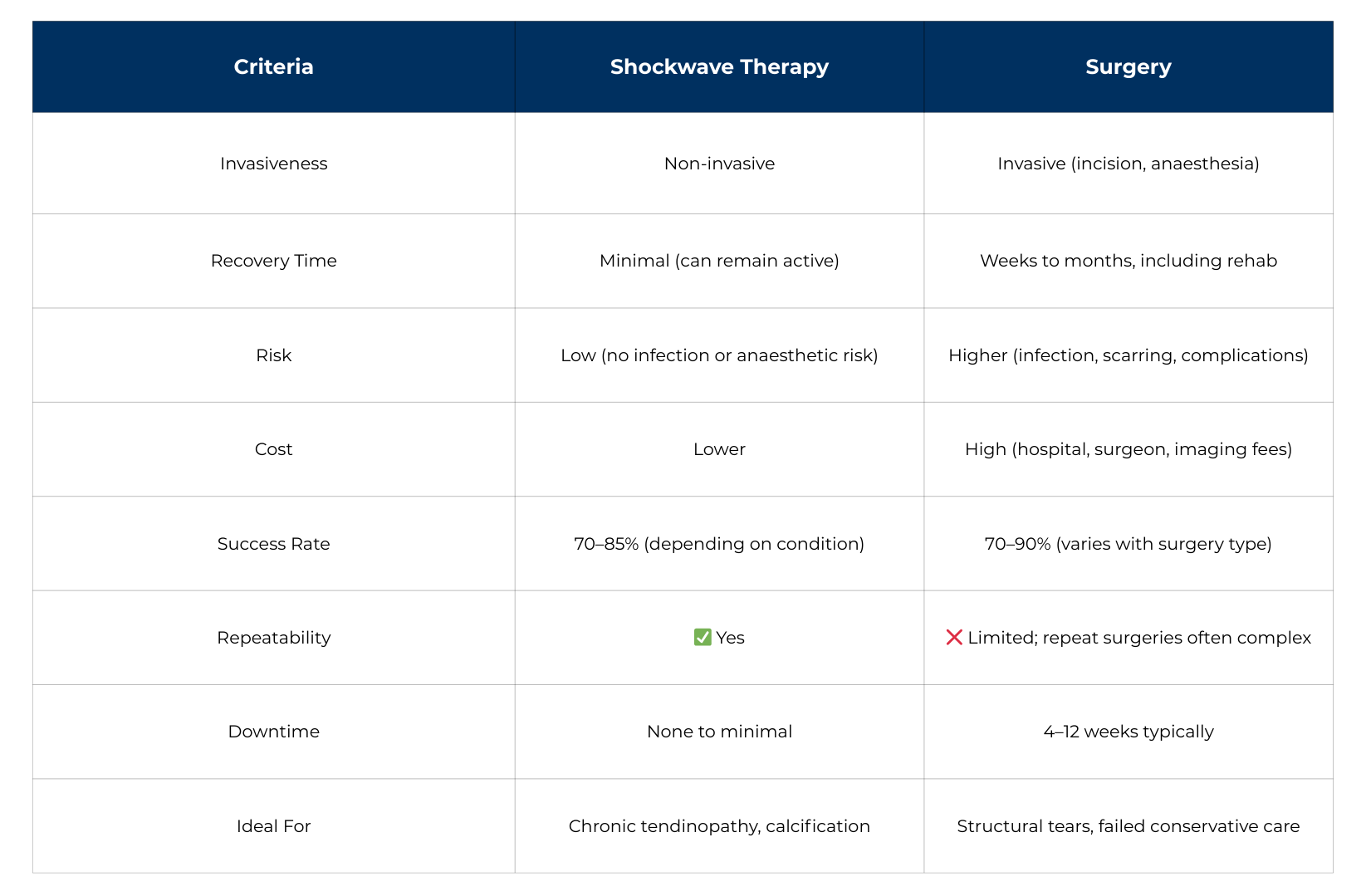Shockwave Therapy vs Surgery: Can You Avoid Going Under the Knife?
Introduction
Surgery is often viewed as the final step when conservative care fails. But for many tendon and soft tissue conditions — especially chronic ones — surgery isn’t always necessary. Shockwave therapy (ESWT) offers a compelling, non-invasive alternative.
At Tensegrity Sports Clinics Sydney, we often see patients considering surgery who get significant results from shockwave therapy alone. Here’s how the two approaches compare.
When Is Surgery Considered?
Orthopaedic or soft tissue surgery is usually recommended when:
- Conservative treatment (physio, injections) fails over 6+ months
- Pain significantly impacts daily function
- There is clear structural damage (e.g. full-thickness tears, large calcifications)
- Imaging confirms pathology unresponsive to other care
Common surgeries where shockwave may be considered as an alternative include:
- Plantar fasciotomy (plantar fasciitis)
- Lateral epicondylar release (tennis elbow)
- Achilles debridement
- Rotator cuff decompression or repair
How Shockwave Therapy Compares
Shockwave therapy uses high-pressure acoustic waves to:
- Stimulate tendon repair
- Dissolve calcific deposits
- Trigger angiogenesis (new blood vessel formation)
- Modulate pain through neurological pathways
It’s non-invasive, requires no downtime, and is supported by high-quality research — especially for plantar fasciitis, Achilles tendinopathy, and calcific shoulder tendinitis.
Research Insights
Shockwave vs Surgery for Plantar Fasciitis
Study: Gerdesmeyer et al. (2008)
- Randomised controlled trial comparing shockwave to surgical release
- Results: 81% improvement in the shockwave group vs 76% in the surgical group at 12-month follow-up
- Conclusion: Shockwave had comparable outcomes without surgical risk or downtime.
Calcific Shoulder Tendinitis
Study: Cacchio et al. (2006)
- Compared focused shockwave therapy to surgery
- Found significantly higher patient satisfaction and faster return to work in the shockwave group
- Surgery had a longer recovery period and higher complication rate
Comparison Table: Shockwave Therapy vs Surgery

When Is Shockwave a Better Option?
- Before committing to surgery, especially in non-rupture cases
- If you want to stay active during treatment
- When you’re recovering from failed injections or physio
- For patients unfit for surgery due to age or comorbidities
Conclusion
Surgery isn’t your only option. In many cases, shockwave therapy offers comparable results to surgical outcomes — without the risks, downtime, or cost. It’s a powerful, evidence-based treatment worth trying first.
At Tensegrity Sports Clinics, we’ve seen shock wave therapy prevent surgery in dozens of patients. We work collaboratively with orthopaedic surgeons and radiologists to determine the best plan for you.
